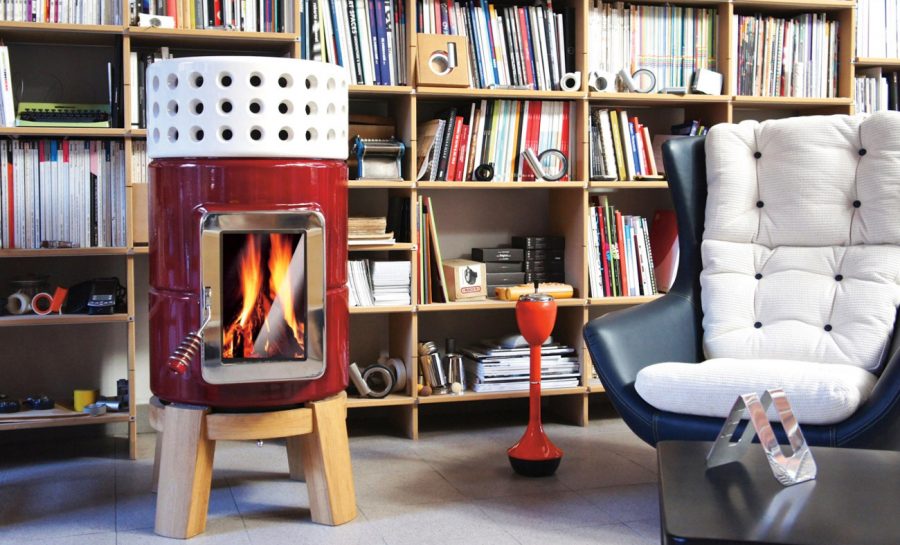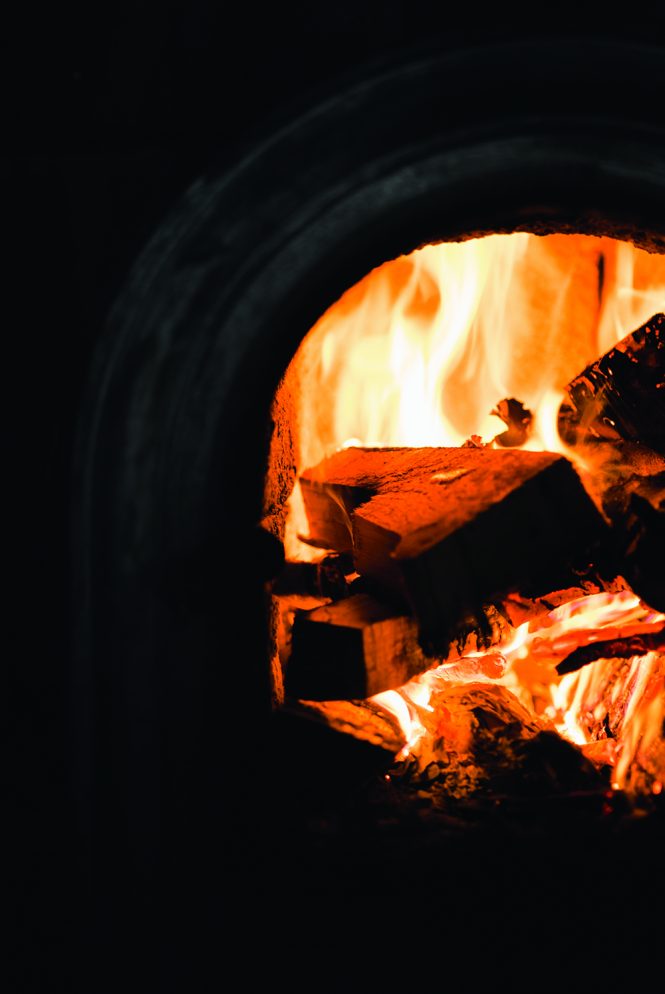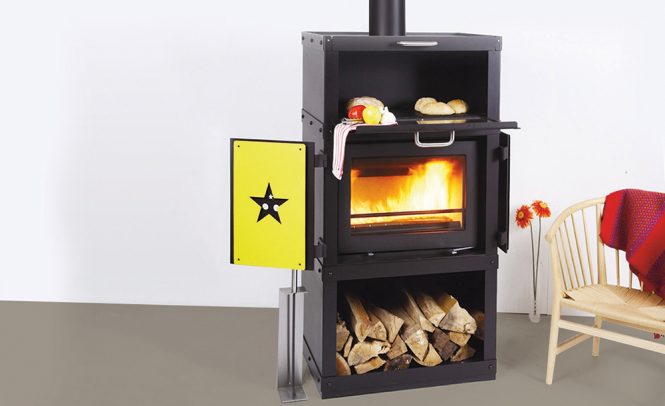Find Hygge Hearth-Side this Winter
In Praise of the Woodstove
By Anne Pyburn Craig | Winter 2018 | Features
There’s no precise translation of the Danish word hygge. It’s found in those moments when all’s right with the world, the conversation sparkles and the refreshments hit the spot, and there’s nowhere else you’d rather be but where you are right this minute. Pronounced “hue-gah,” the word has Danish and Old Norse origins, meaning (respectively) “to give courage, comfort, joy” and “soul, mind, or consciousness.” And while many things can be considered hygge, there is arguably nothing more hygge than sitting before a crackling fire in wintertime.
Niels Wittus at Wittus Fire by Design in Pound Ridge became an importer of fine Danish stoves in the late 1970s when his father and a colleague visited from his native Denmark for a trade show. “The importer screwed them and they were left with a pile of stoves in a warehouse down South,” he recalls. “With no research, just a truck and a trailer, we started taking them around to dealers.”
Back then, the conversation about alternative energy sources was just getting started. The wood-stoves that Wittus was selling were the brainchild of renowned Danish designer Bent Falk, whose Klassic wood-stove, introduced in 1970, integrated the tradition of a raised firebox with an oven above and a wood storage compartment below with sleek design and updated technology. “The dealers loved the handcrafted aspect,” Wittus recalls. “We knew we had something people really liked. We ran a few ads in Metropolis magazine—that put us on the map, and people started coming out of the woodwork.”
Wittus Fire by Design still offers Falk’s Klassic as one of its state-of-the-art wood cook-stoves—if anything is even more hygge than a fire in the wood-stove, it would have to be baking bread atop that fire—plus the rotating oval Stromboli, with 30 different color choices of cladding in natural stone, sandstone, or steel; and the sleek German Twinfire, with high-efficiency double fire boxes. Over 150 wood-stove distributors—from high-end furniture stores, designers, and architects to mom-and-pop outlets—carry the Wittus line of handcrafted, high-tech wood-stoves. Prices range from about $4,000 for a basic stove to about $12,000 for stoves with soapstone, sandstone, or tile cladding. (Gas- and pellet-burning options are also available in a similar range of designs.)

Photo: Fabian Grohs
Today, in the face of climate change and rising energy costs, more and more people are turning to energy-efficient biomass heating systems, which rely upon natural energy sources like wood or recycled industrial waste. Biomass not only shrinks your carbon footprint and heating bills, but also generates substantial hygge, says John Mountford, owner of Fireside Warmth, which opened in 1975 in Kingston and has thrived as a family-run company through four generations, selling and installing wood-stoves and inserts and designing and installing mantelpieces and fireplaces. The company offers wood-, gas, and pellet stoves; inserts; wood and gas fireplaces; and even clean-burning coal stoves from over a dozen creative makers. “Our family’s been doing this over 40 years,” says Mountford, “so we’ve developed a broad and deep expertise in helping the customer find just the right hearth for their aesthetic and lifestyle. And, yes, a fireplace or a stove will give you a cozy feeling that nothing else can.” Fireside Warmth’s recently renovated showroom includes models from foreign and American brands, including Jotul, Quadrafire, Country, Lennox, Heat N Glo, RSF Fireplaces, and Hearthstone.
Although Mountford and Wittus also sell gas stoves, they consider wood-stoves to be superior. “Gas stoves are more for people who want a flame in the background,” says Wittus. “A wood fire is a focal point. And if something is going to contain a wood fire in your home, you certainly want it well made. We sell that, plus design and ambiance.”
Modern Marvels
A well-made modern wood stove incorporates the kind of technology that our grandparents only dreamed about. “Back when we first started, you didn’t have wood stoves with glass; there were concerns about breakage and dirtiness,” says Wittus. “Now we have an air-washing system that works like a windshield defroster, pulling in the air and blowing it down over the glass so the particulates don’t build up, and we use a ceramic glass that can withstand 2,000 degrees. Convection technology keeps the sides of the stove cooler and provides a more even heat. And the EPA has changed performance. Back in the mid-’80s, a stove was typically 40- to 50-percent efficient. Now, some are up to 92-percent efficient—much more heat from the same log, and less smoke.”
That said, Wittus believes it’s possible to over-regulate wood burning. “At the end of the day, you can’t burn anything without some pollution, but burning biomass reduces fossil fuel usage and a good, clean-burning stove produces no more CO2 than a decomposing tree,” he says. “Potentially requiring all stoves to have catalytic converters will drive prices way up all through the market, out of a lot of people’s reach. It’s ironic: In Norway, rural houses are required to have wood stoves as a health and safety measure; here, it sometimes seems we’re trying to get rid of them.”

The Klassic wood-stove was developed in 1970 by Danish industrial designer Bent Falk and has been updated by him to EPA standards. Based on the classic European stove, it provvides efficient heating and functional compartments allowing wood storage below the fire and baking and cooking on top. The current, EPA-standard version features a self-cleaning glass door.
Hearth products are recognized in some circles as part of the solution to climate change. The Twinfire model took second place in the international Wood Stove Decathlon organized by the Alliance for Green Heat, and was incorporated into the winning design in the Canadian Green Building Awards of 2014. A Wittus Shaker stove comes pre-installed in every unit at the exclusive eco-friendly Hudson Woods development in Kerhonkson, and many types of stoves qualify for NYSERDA efficiency incentives.
“Tending a stove is a labor of love,” Wittus admits. “One of our first clients, the architect Joe Levine, said that when you get home after a long day, the process of laying and lighting the fire slows you down like a meditation. It’s the ultimate warm furniture.“
But if your memory of stove-keeping involves splitting wood, finding splinters in the rug, and endlessly sweeping up ashes, rethink that. Not only has the technology become much more user-friendly, but, after installation, Fireside’s team returns annually for a maintenance visit. “Our goal is to make sure all your needs are met,” says Mountford, “so your hearth can really be the heart of your home—strong, steady, warm, and trouble-free.”
Meditating on the task of making a fire after a long winter’s day? That sounds very hygge to me.
Wittus Fire by Design
40 Westchester Avenue
Pound Ridge
wittus.com
(914) 764-5679
Fireside Warmth
901 Route 28
Kingston
firesidewarmthonline.com
(845) 331-5656
